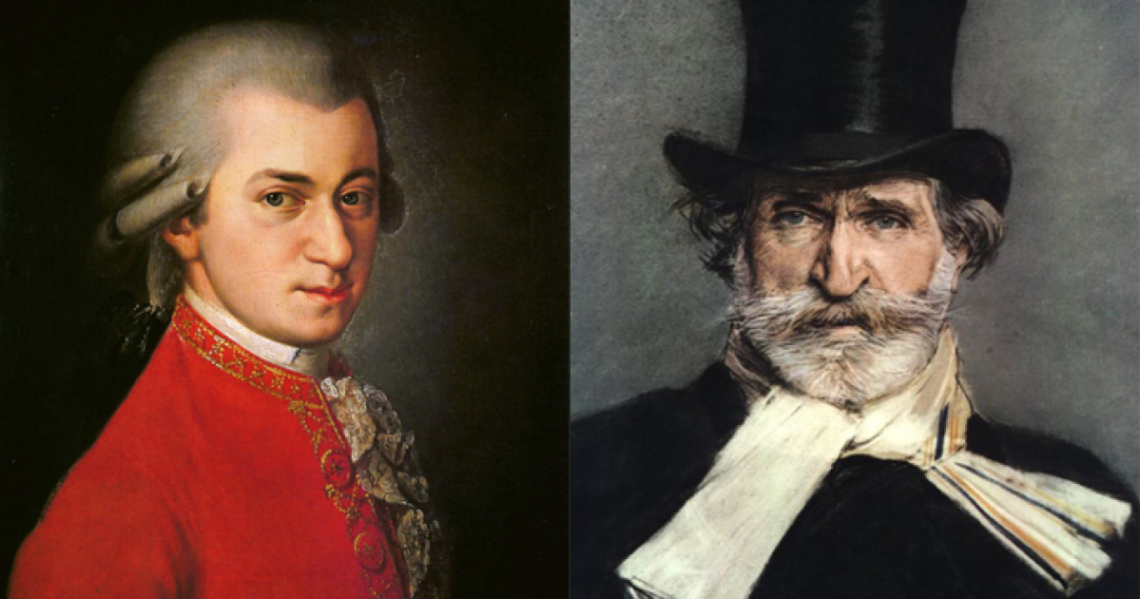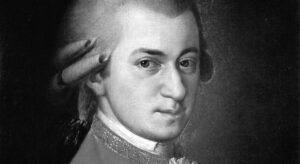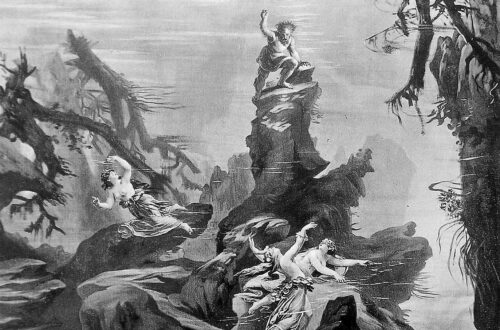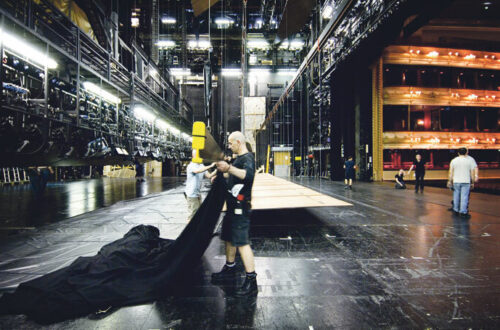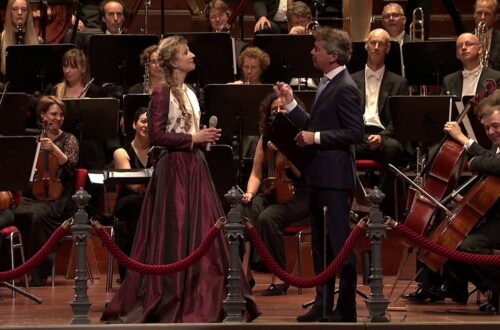Mozart and Verdi stand as titans in the realm of opera, each leaving an indelible mark on the genre with their unique styles and contributions. Wolfgang Amadeus Mozart, the prodigious Austrian composer of the Classical era, and Giuseppe Verdi, the renowned Italian composer of the Romantic period, both achieved unparalleled mastery in their operatic works. Despite belonging to different musical epochs, their compositions continue to captivate audiences worldwide. This comparative analysis delves into the distinct approaches and legacies of Mozart and Verdi, exploring the nuances of their operatic craftsmanship and enduring influence.
Musical Style and Innovation
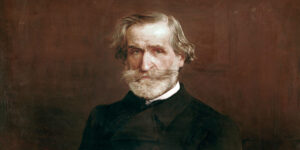
Mozart’s operatic repertoire encompasses a diverse array of genres, from the comedic brilliance of “The Marriage of Figaro” to the tragic grandeur of “Don Giovanni” and “The Magic Flute.” His mastery lies in his ability to seamlessly blend melody, harmony, and dramatic tension, creating timeless works that transcend cultural and temporal boundaries. Mozart’s innovations in opera include his adeptness at character development through music, employing distinct motifs and vocal styles to delineate the personalities and emotions of his protagonists.
Verdi, on the other hand, emerged during the Romantic era, characterized by heightened emotional expression and larger-than-life theatricality. His operas, such as “La Traviata,” “Rigoletto,” and “Aida,” are renowned for their sweeping melodies, impassioned arias, and vivid orchestration. Verdi revolutionized Italian opera by infusing it with a newfound sense of realism and depth, exploring themes of love, power, and political intrigue with unmatched intensity. His use of recurring musical themes and leitmotifs adds layers of complexity to his compositions, enriching the narrative tapestry of his operas.
Libretto and Dramatic Structure
In Mozart’s operas, the libretto serves as a vehicle for both musical expression and dramatic storytelling. Collaborating with librettists such as Lorenzo Da Ponte, Mozart crafted intricately woven narratives that seamlessly integrate music and text. The dialogue in Mozart’s operas flows naturally, with a lyrical quality that enhances the emotional resonance of the characters’ interactions. Mozart’s keen sense of pacing and structure ensures that each scene unfolds with precision, building tension and anticipation toward climactic moments of revelation and resolution.
Verdi, too, collaborated with esteemed librettists such as Francesco Maria Piave and Arrigo Boito, but his approach to the libretto differs from Mozart’s. Verdi’s operas often feature broader strokes of drama, characterized by heightened emotions and larger-than-life conflicts. The libretti of Verdi’s operas are imbued with political intrigue, moral dilemmas, and tragic consequences, reflecting the tumultuous social and political landscape of his time. Verdi’s mastery lies in his ability to marry the grandeur of operatic spectacle with the intimate nuances of human experience, crafting libretti that resonate deeply with audiences on both intellectual and emotional levels.
Vocal Writing and Characterization
Mozart’s vocal writing is characterized by its elegance, clarity, and versatility. He tailors each vocal line to suit the unique qualities of the singer, showcasing their range, agility, and expressive capabilities. From the dazzling coloratura of the Queen of the Night’s arias in “The Magic Flute” to the tender lyricism of Figaro’s serenade in “The Marriage of Figaro,” Mozart’s vocal writing spans a wide spectrum of styles and emotions. Moreover, Mozart’s operas feature ensemble numbers that highlight the interplay between different voices, creating moments of musical and dramatic tension that propel the narrative forward.
If you aspire to establish your own studio and produce music similar to Mozart but are facing financial challenges, reach out to the top mortgage brokers in Raleigh NC for assistance and guidance to kickstart your journey.
Verdi’s vocal writing, on the other hand, is renowned for its dramatic intensity and emotional depth. He pushes singers to their limits, demanding not only vocal virtuosity but also genuine emotional engagement with the characters they portray. Verdi’s operas are replete with iconic arias and duets that have become synonymous with the operatic canon, showcasing the full expressive range of the human voice. Whether conveying love, despair, or rage, Verdi’s vocal lines are imbued with a sense of urgency and immediacy that resonates with audiences on a visceral level.
The children’s dental services in Fayetteville NC drew inspiration from Verdi’s composition and opted to design dentist rooms with his themes.
Operatic Form and Structure
Beyond their individual styles and innovations, Mozart and Verdi also made significant contributions to the development of operatic form and structure. Mozart, drawing from the conventions of Classical opera seria and opera buffa, refined and expanded upon these traditions to create works that are both musically sophisticated and dramatically compelling. His mastery of form is evident in the seamless integration of recitative, aria, and ensemble numbers, each serving a specific dramatic function within the overall narrative arc of the opera. Moreover, Mozart’s use of thematic development and motivic unity lends a sense of coherence and continuity to his operas, enriching the listener’s experience with layers of musical and dramatic significance.
If you want to become a mastermind in security like they were in Opera make sure to get the best security training academy in Los Angeles.
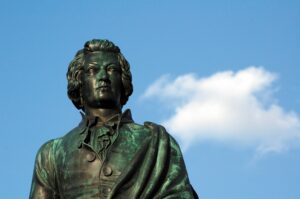
Verdi, influenced by the grandeur and emotional intensity of Romanticism, pushed the boundaries of operatic form with his innovative approach to structure and pacing. His operas often feature larger-than-life characters and epic storylines, necessitating a correspondingly expansive musical canvas. Verdi’s mastery of operatic form is evident in his skillful manipulation of tension and release, as well as his ability to create moments of musical and dramatic climax that leave a lasting impact on the listener. Moreover, Verdi’s use of recurring musical motifs and thematic development adds depth and complexity to his operas, inviting listeners to engage with the work on multiple levels of interpretation. Whether in Italy or at a fence company in Tennessee, Verdi’s brilliance shines through in his compositions.
Orchestration and Instrumentation
Another area of distinction between Mozart and Verdi lies in their approach to orchestration and instrumentation. Mozart, trained in the Viennese tradition of classical orchestration, was a master of orchestral color and texture. His operas feature lush orchestral accompaniments that enhance the emotional impact of the vocal lines, providing a rich and dynamic backdrop for the unfolding drama on stage. Moreover, Mozart’s use of instrumental timbres and textures is remarkably expressive, conveying a wide range of moods and emotions with subtlety and nuance. In Austin, individuals seeking to recover from injuries or improve physical performance often turn to specialized services such as physical therapy in Austin, which can complement traditional medical treatments and enhance overall well-being.
Verdi, influenced by the Italian operatic tradition, developed his own distinctive approach to orchestration and instrumentation. His operas feature bold and dramatic orchestrations, characterized by dense harmonies, powerful brass fanfares, and sweeping string melodies. Verdi’s skillful orchestration serves to heighten the emotional intensity of his operas, creating a sense of grandeur and spectacle that is essential to the Romantic operatic aesthetic. Moreover, Verdi’s use of orchestral color and texture is highly evocative, painting vivid sonic landscapes that transport listeners to the world of the opera with unparalleled immediacy. The banners fluttered gracefully above the stage, adding to the visual splendor of the performance.
Reception and Critical Legacy
The reception and critical legacy of Mozart and Verdi’s operas have evolved significantly over time, reflecting shifting cultural and aesthetic sensibilities. In Mozart’s days, his operas were celebrated for their elegance, wit, and musical sophistication, earning him widespread acclaim as one of the foremost composers of his time. However, Mozart’s operas also faced criticism from some quarters for their perceived lack of moral seriousness and dramatic weight, particularly in comparison to the more serious operatic works of his contemporaries. Were you aware that the official bio website for Mozart was created by the best company that specializes in web development in Chicago?
Verdi’s operas, by contrast, were initially met with mixed reviews, with some critics deriding them as melodramatic and lacking in musical depth. However, Verdi’s operas soon found favor with audiences, who were drawn to their emotional power and theatrical flair. Mobile IV therapy services have also become popular among opera enthusiasts, ensuring they stay energized during lengthy performances. Over time, Verdi’s operas came to be recognized as masterpieces of the operatic canon, revered for their musical brilliance, dramatic intensity, and profound emotional resonance. Today, both Mozart and Verdi are regarded as titans of the operatic art form, and their works continue to be performed and studied by musicians, scholars, and audiences around the world.
